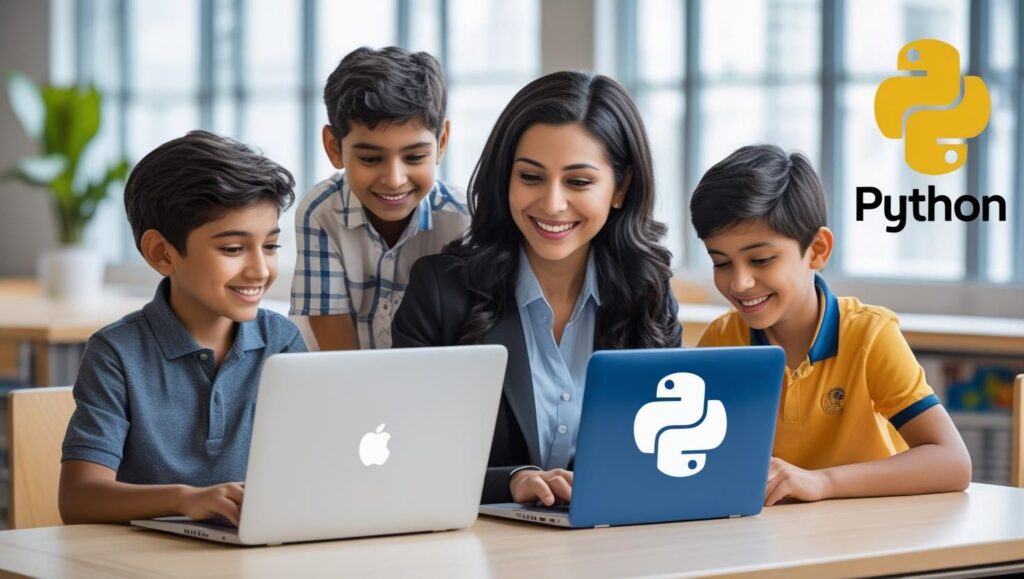Discover how to teach Python to kids through fun, beginner-friendly projects. This guide helps parents and teachers make coding for kids exciting and effective.
Why Choose Python for Kids?
Python is one of the best programming languages for beginners. Its simple syntax makes it perfect for kids who are new to coding. Teaching Python to children encourages logical thinking, problem-solving, and creative exploration through fun digital projects.
Whether you’re a teacher introducing coding in school or a parent guiding your child at home, Python is a smart place to start.
Who Can Teach Python?
You don’t need to be a software engineer to introduce Python to kids. If you’re a parent looking for fun educational activities or a teacher integrating tech in the classroom, this guide is for you.
Even with no prior coding experience, you can help kids learn Python through visual projects, games, and interactive tools.
How to Teach Python to Children – Step-by-Step
1. Begin with Visual Coding (Optional)
If your child is completely new, start with Scratch programming to build confidence in logic and structure before transitioning to Python.
2. Set Up Beginner-Friendly Python Tools
These platforms are great for Python beginner projects:
- Thonny – A clean desktop environment
- Replit – Browser-based and collaborative
- Trinket – Perfect for kids and beginners
3. Introduce Python Concepts Gradually
Teach core concepts with engaging examples:
- Print statements and variables
- Loops and conditionals
- Turtle graphics for drawing
- Basic game design
Use relatable examples so that kids understand how Python works in the real world.
4. Try Python Beginner Projects for Kids
Project-based learning is key. Here are some fun Python projects for kids:
- Build a digital quiz
- Draw shapes using Turtle
- Create a mini calculator
- Design a simple chatbot
These hands-on activities reinforce what they’ve learned and make coding for kids exciting and rewarding.
5. Keep It Playful and Encouraging
Add creativity, games, and rewards to maintain engagement. Let kids build projects they can share, such as birthday card generators, digital pets, or animation stories.
Tips for Parents and Teachers
- Start small and move at your child’s pace
- Encourage exploration — let them make mistakes and learn
- Combine screen time with purpose
- Provide real-world context to coding
- Use visuals, storytelling, and challenges to explain new ideas
Recommended Resources for Python for Kids
Explore these platforms offering Python for children:
- CodeCombat – Learn Python through games
- Tynker – Courses for kids aged 7+
- Little Tech Learners – Creative, project-based coding for kids
Final Thoughts
Teaching Python to kids helps them become confident, creative, and future-ready. Whether you’re guiding your child or leading a classroom, starting with small, fun Python projects is the key.
Introduce coding early and let kids explore how Python can help them think logically, create games, and build real-world tech skills.

